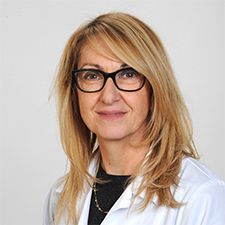Overview
The Department of Neuroradiology uses computer tomography on the head (brain, jaw, teeth, etc.), neck and spine. It is used, among other things, for strokes, cerebral hemorrhages, tumors, skull base fractures, and to accompany the planning of operations or angiographies (imaging of vessels, e.g. aneurysms in the brain). The applications of CT are diverse and since today’s devices no longer have a narrow tube but a wide ring, the procedure can also be used for people with claustrophobia.
Computed tomography provides fast and meaningful results and is a painless examination that can usually be carried out quickly – depending on the type of medical issue. However, it is associated with exposure to X-rays, which is considered to be low. Nevertheless, always discuss with your doctor whether the examination is really necessary and whether there are any radiation-free alternatives.
Our special examinations
In addition to general examinations of the head, neck and spine, we carry out the following special examinations:
- Emergency radiology
- Head and neck imaging
- Advanced Neuroimaging
Why to the USZ?
Many years of expertise
Our clinic is an internationally renowned institution in the field of image-guided diagnostics and minimally invasive treatment. We examine and treat diseases of the brain, the spinal cord, the peripheral nervous system and its associated organs (eyes, hearing and balance organs, etc.) and the surrounding structures of the head, neck and spine.
The latest treatment methods
At the Clinic for Neuroradiology we use the most modern methods, equipment and imaging procedures. This allows examinations to be performed with the best possible image quality and the lowest possible radiation dose.
Partner network
In addition, we work with experts from the fields of neurosurgery and neurology to develop an individual treatment concept for each case, which we then discuss with you. Our doctors are supported by outstanding medical-technical radiology assistants (MTRAs) and our international network of experts to ensure optimal therapeutic success. This enables us to offer every patient the best possible treatment.
Procedure
Modern CTs are no longer narrow tubes, but look more like a large ring. Most of the body is outside the ring during the examination. This is a great advantage, especially for people with claustrophobia, as they are not enclosed and have a clear view of the outside during the examination.
Depending on the medical question, the total duration of a CT scan is around 15 minutes. The scan itself usually only takes a few seconds. This is roughly how the process can be described:
- You take a seat on a lounger. You should lie there as comfortably and quietly as possible during the examination – otherwise the images could be “blurred” and out of focus.
- Due to the X-ray radiation, you will be alone in the examination room, but connected to the radiology assistant via an intercom system, with whom you can contact at any time.
- The stretcher is pushed through the large ring via a rail.
- The X-ray machine rotates around your body. It scans the body region about which the doctor wants information in layers within a few seconds. Sometimes you will be instructed to hold your breath for a few seconds in between. In some situations, doctors also use a contrast agent containing iodine in order to assess certain structures even better.
- A measuring system opposite the X-ray tube receives the radiation reflected by the various body structures. The signals are more or less attenuated, depending on the density of the tissue. Bones, for example, have a high density and attenuate the rays more strongly.
- A computer compiles a three-dimensional, complete image of the examined organ or structure from the measured values. Fabrics of different densities appear in different shades of gray.
| Preparation |
none |
| Anesthesia |
not necessary |
| Duration of examination |
5 – 30 min |
